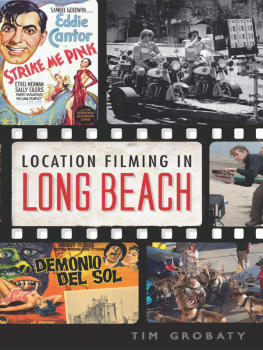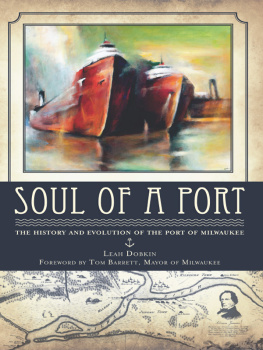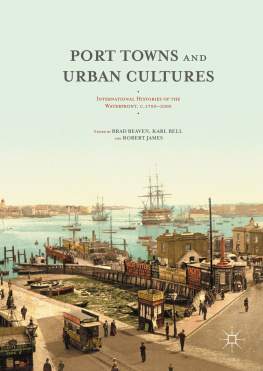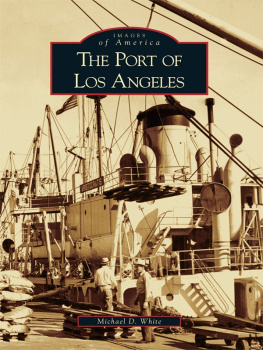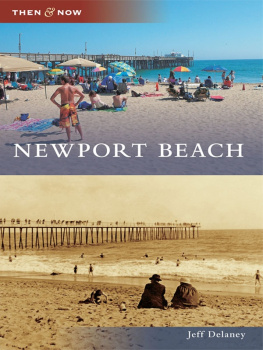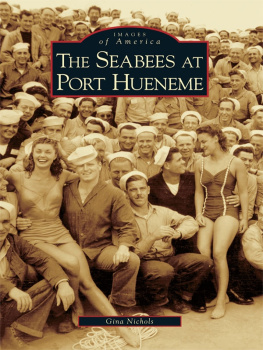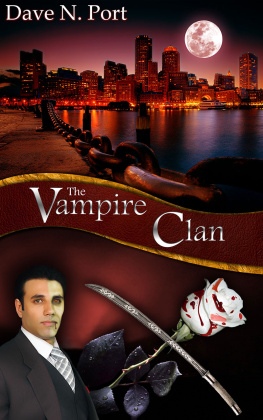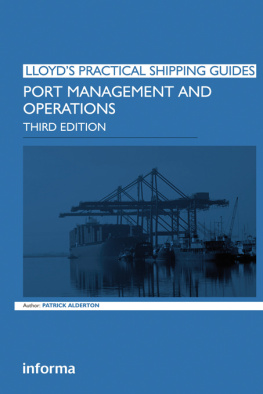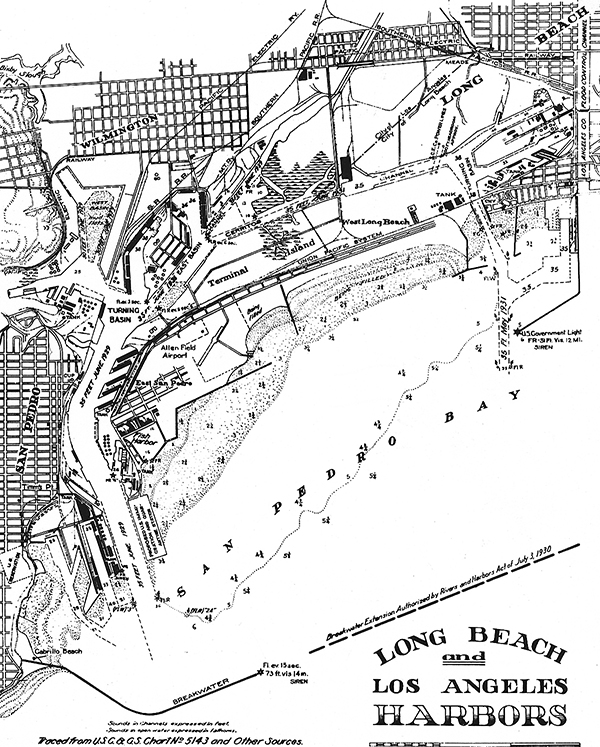PORT
TOWN
How the People of Long Beach Built, Defended, and Profited From Their Harbor
By George and Carmela Cunningham
Dedicated to the people of Long Beach
past, present, and future.
Copyright 2015 by City of Long Beach
All rights reserved.
For ordering information contact:
Port of Long Beach
PO Box 570
Long Beach, CA 90802
www.polb.com
Written by George and Carmela Cunningham
Project management by Jen Choi
Production coordination by Donna Shipman
Editing by Chris Berry, Art Wong, Yvonne Rehg Smith, and Harold Glicken
Index by Julianne Alfe and Chris Berry
Map illustration by Jared Blando
Cover, book design, and production by Eden Parrish
Electronic version production by Chris Berry
Photography credits:Friends of the Ballona Wetlands page 25
LA Public Library page 79
Library of Congress pages 35, 51, 95, 119, 261
Historical Society of Long Beach pages 109, 145, 245, 273, 325, 347
Port of Long Beach pages 2, 15, 123, 131, 139, 159, 160, 179, 195, 221, 235, 245, 255, 273, 283, 317, 321, 325, 329, 337, 347, 363, 377, 381, 391, 417, 423, 427, 429, 457, 473, 479, 489, 497, 513-562
University of Southern California page 55
ISBN 978-0-692-46847-0
Second Edition
Table of Contents
FOREWORD
This is how the story ends. Here in Long Beach, we have what I will describe as the finest seaport in all of the United States of America. Its easy to summarize the story in a few words. Our City of Long Beach Harbor Department started with a voter-approved bond issue in 1911 that provided the seed money for a huge omni-port that would eventually handle containers, wet and dry bulk cargo, automobiles, and virtually every type of cargo that moves by sea. But whats the back story, the secret to Long Beachs implausible success? Today, we have the deep water to accommodate huge vessels, and we have access to two of Americas largest railway systems the Union Pacific and the Burlington Northern Santa Fe. But why build such a port in Long Beach? Its easy to understand building a port in the sprawling metropolis that is Los Angeles. But little Long Beach? San Pedro Bay is home to the ports of both Los Angeles and Long Beach, and its the dominant U.S. gateway of choice for trade from Asia. How did that happen?
The Port of Long Beach was built out of the mighty mud, which threatened again and again to swallow the Port before it really began. Skip ahead one hundred years and industry leaders repeatedly vote for Long Beach as North Americas finest seaport. Why? Part of the answer is that Long Beach is a landlord port. We develop and rent cargo facilities. Thats our unique expertise. We do not operate terminals our customers are the premier operators, the ones in front of the curtain. Our magic is in finding the right performers to put on that front stage.
After a century we rival the greatest ports in the world. It isnt only our business acumen. Los Angeles, for example, is still bigger and moves more cargo. At least for now. In Long Beach we operate with about half the number of employees and earn about three times as much as our bigger neighbor. Our aim is to be the worlds best port, the worlds most innovative port, the worlds most socially and environmentally responsible port. Of course, thats one of our secrets, too. We always aim high.
In 2011 the Port of Long Beach celebrated 100 years of phenomenal success. We completed that celebration and our Board of Harbor Commissioners came away with a greater understanding of our history and yet we wanted to know even more. We acted just like any governmental agency would. We sent out a Request for Proposals, and the search was on. Who would write our history?
We found George and Carmela Cunningham. George had covered the waterfront for decades as a reporter for the Long Beach Press-Telegram , and his own Cunningham Report which he published with his wife, Carmela covered ports and the trade and transportation community for fifteen years. George and Carmela know the waterfront. Their access to information is unsurpassed. Here they chronicle our history. They unearth the secrets of our success. And, they have a fine flair for prose their style is colorful, and they have made our past and the people in it come to life.
This is also a story about the City of Long Beach. George and Carmela describe our love affair with the Navy, shipyards, oilfields, manufacturing plants, downtown Long Beach, and the Pike waterfront amusement center. They show that we were an industrial city and how we are now evolving into a diverse, cosmopolitan community as well as a key hub for the worlds major trade routes. The Port of Long Beach has become a vital center of international trade, and this is the story of how that happened.
Doug Drummond
President, Long Beach Board of Harbor Commissioners
PREFACE
To write a history is to tell a story. A story about places, about people, about events. But a good history has to be more than just a compilation of facts and a recounting of occurrences, no matter how accurate they may be. A good history has to put those facts into perspective, to point out the patterns that manifest themselves, and the motivations that led the people involved to take the actions they took.
Our goal was to write a good history a history that the reader will not only enjoy, but that will be worth his or her time to read. This is an adventure story, a story with both comedic and tragic elements, a story of people with unlimited vision, and of those whose vision went no further than their own self-interest. Most of all, it is a story about how a river delta mudflat was transformed for better or for worse into a world-class port.
We called it Port Town . The name did not come easily. We wont mention our working title, except to say it was badly flawed. Our friends and associates were not reticent in sharing that opinion with us, and we thank them for it.
Port Town is the name we finally chose, because perhaps above all else, Long Beach is a port town. The port and the city complement one another, even if the relationship is sometimes contentious. The Port of Long Beach is not supported by tax dollars. It gets its money by leasing out terminals to shipping lines, stevedoring companies, oil importing companies, and other businesses. The port generates jobs for city residents and economic well-being for others who dont work directly in the freight-moving business. It eases the burden on taxpayers by yearly transfers of cash to maintain beaches and waterfront that would otherwise come from taxpayers pockets. When the city is in economic trouble as it was during the 1990s the port is there to help.
Los Angeles is not a port town. Los Angeles is a city that happens to have a port. In Los Angeles, the port is an appendage, dangling like a pendulum far below the city, connected only by a shoestring strip. San Pedro and Wilmington could have been port towns, but in 1909 the citizens of those two communities voted to become part of the City of Los Angeles, connected to a city government more than 20 miles up the shoestring strip. Long Beach was offered the same deal. Long Beach said no.
The Port of Los Angeles is run by the massive City of Los Angeles. The members of the harbor board a post often awarded as a political favor can come from anywhere in the city from the San Fernando Valley to Pacific Palisades. Sometimes the Los Angeles commissioners even come from the local communities , but not always. The people of San Pedro and Wilmington may live next to a port, but they do not control it. Their interest in the port, and their control over it, are diluted by the sheer size of the mega entity to which they belong.
Next page

